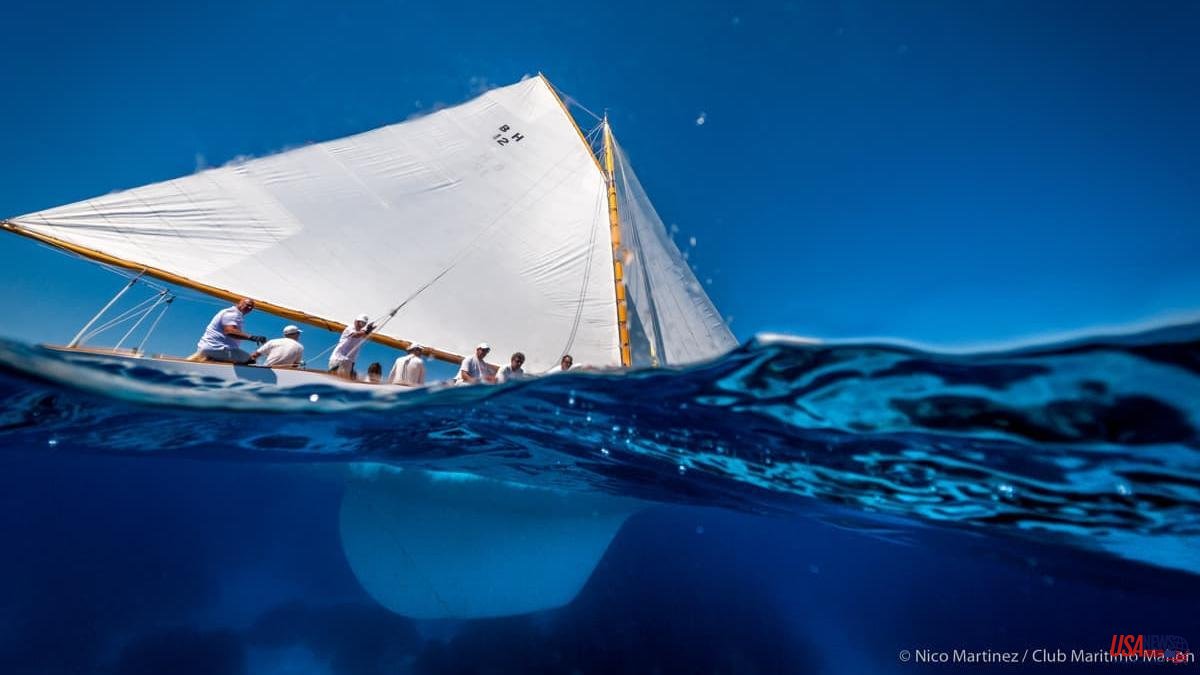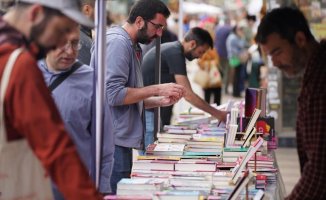Little wind, but maximum emotion in the final day of the XVIII Copa del Rey de Barcos de Epoca disputed from last Friday to this Sunday under the organization of the Club Marítimo de Mahón. A xaloc (SE) wind of between six and eight knots accompanied the fleet made up of 49 boats from 11 countries in a final journey of 11 nautical miles where all the crews with options had to work hard.
The victory, hotly disputed in the five categories, went to the boats Viveka (Big Boats), Spartan (Crab Era), Varuna (Bermudian Era), Argos (Classics) and Calima (Spirit of Tradition).
The oldest sailboats in the Copa del Rey Repsol, launched before 1950 and rigged with trapezoidal sails, experienced a very intense regatta. The American Spartan (1913, Herreshoof), second in the day's heat behind the Chinook (1916, Herreshoff), managed to beat the Scud (1903, Herreshoff) by just one minute.
“We have been close”, lamented the Brazilian Olympic five-medallist Torben Grael, skipper of this last boat built by the Italian businessman Patrizio Bertelli. "We have the lowest mast in our category and that hurts us in light winds."
Courtney Koos, Spartan tactician, recognized that the victory had required a great effort from the crew: “It has been a great day, very challenging because we have had light winds that are difficult for us because we have the heaviest boat in the category . We have worked as a great team and I think we have really done it”.
If one thing was clear in the Crab Era class, it was the dominance of Nathael Greene Hereshoff's designs that took the podium. The Spartan was one of a series of nine sailing ships that left the Bristol Wizard shipyard between 1913 and 1915. She had no bowsprit, which was unusual for her time. Converted to a yawl in 1945 and refitted in the 1960s and 1970s, the Spartan was used as a charter ship in the Caribbean. In 1989 a first phase of reconstruction began, but the work was interrupted due to various vicissitudes. After a time of neglect, she was transferred to the Herreshoff museum in 1993, where she remained until the last restoration of her, in 2009.
No one would have bet on the Varuna (1939, Sparkman
Joe Knowles, skipper of the Varuna, admitted that the light winds this Sunday had favored him. “It has been an exciting regatta; We have had to work the strategy well but as we have progressed, we have only had to defend our position. It has been very interesting to participate in the Copa del Rey due to the wind conditions, the boats and the atmosphere. We will be back next year for sure,” he declared.
The Varuna is one of eight Sparkman designs
Another boat that behaves well in light winds is the Argos (1964, Holman
Although Trilling assured that the presence of the Encounter (1976, German Frers), winner of the second round, caused them some concern, the truth is that the Argos, with two first and one second, did not see its supremacy in particular in danger. The Giraldilla (1963, Sparkman
“Today we put everything on our side to be able to win. We have used almost all the sails and, thanks also to the good work of the crew, we have finally won. We are very happy”, said Trilling, who then confessed that he was not aware of the number of triumphs accumulated by his crew.
The two Big Boats unpublished until this edition of the Copa del Rey Repsol maintained a tough fight for victory. Viveka (1929, Frank Paine) finally beat Sumurun (1914, William Fife III) thanks to his victory in the heat this Sunday. The impressive schooner Mariete (1915, Herreshoff), 39 meters long, was overtaken by Hallowe'en (1926, William Fife III), which came in third place.
Keith Mills, owner of the Viveka, could not hide his joy upon arrival in port. “The three days of competition have been incredible: the organization, the port, the wind conditions… Today's regatta has been very close, which is when you really have a good time. We made a very bad start, but we quickly moved into the lead. The arrival has been very competitive among all the boats. It is a pleasure to see the Viveka sailing like this after seven years of reconstruction.”
The Viveka, launched in 1929 and 22.4 meters long, is a Frank C. Paine design built by Fred Lawley in Quincy, Massachusetts. It was commissioned by the banker J.P. Morgan, who above all wanted a fast boat to win races.
During World War II he was 'recruited' by the US Navy for the 'Hooligan's Navy', the fleet of pleasure boats that guarded the US coasts against possible German or Japanese attacks. In 2015, a complete restoration was carried out at the Rutherford's Boatshop shipyard, in Richmond, United States, which has been rewarded with the victory in the Copa del Rey de Barcos de Epoca.
No boat has achieved victory more times in the Copa del Rey Repsol than the Calima (1970, Sparkman
The Argentine boat Matrero (1970, German Frers), which made its debut in the Mahon regatta, won third place in the Spirit of Tradition class, a category where the Classics that have been modified or those that, even being made of wood or aluminum, are listed. , were built after 1976.













